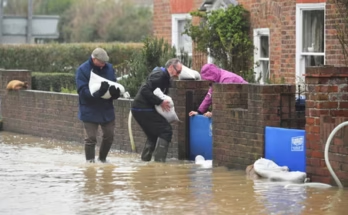Across the United States, homeowners are facing a sharp and unprecedented rise in insurance premiums. From the Gulf Coast to California’s wildfire zones, climate change is not just reshaping landscapes—it’s reshaping the home insurance market.
According to recent industry reports, the average cost of homeowners insurance rose by 21% in 2023 alone, far outpacing inflation and wage growth. In disaster-prone regions, the situation is far more dire, with some households seeing their premiums double or even triple in just a few short years.
The Driving Forces Behind Rising Costs
A Surge in Climate-Related Disasters
Where once hurricanes, wildfires, floods, and hailstorms were seen as rare, billion-dollar disasters have now become routine. In the 1980s, the U.S. averaged just three such events annually. By 2024, that number had jumped to over 18 each year.
This spike in extreme weather has led to soaring insured losses, which topped $112.7 billion in 2024, a 36% increase over the prior year. As a result, insurers are recalibrating their risk models—and homeowners are paying the price.
Insurers Retreating from High-Risk States
Major players like State Farm and Allstate have announced they are no longer writing new home insurance policies in wildfire-prone California. Similar exits are underway in Florida, where hurricanes and flooding present mounting risks. Homeowners increasingly must turn to state-run “insurers of last resort,” such as California’s FAIR Plan or Florida’s Citizens Property Insurance, both of which often come with higher premiums and less comprehensive coverage.
Regional Hotspots for Premium Increases
| State | Avg. Annual Premium (2025) | Key Risks |
|---|---|---|
| Florida | $15,000+ | Hurricanes, flooding |
| Louisiana | $13,900 | Hurricanes, flooding |
| California | Up 21% | Wildfires, earthquakes |
| Colorado | Up 11% | Wildfires, hail |
| Utah | Up 59% (2021–2024) | Fire, seismic risks |
The Ripple Effects on Homeowners
Higher insurance premiums have broad consequences beyond monthly budgets. Rising costs are making homes in vulnerable areas less attractive to buyers, threatening property values and complicating access to mortgages, which typically require adequate insurance.
Financial experts are warning of a potential feedback loop: unaffordable insurance leads to abandoned homes, which leads to falling property values, which could ultimately impact local tax bases and economic stability.
Behind the Numbers: Reinsurance and Inflation
A less visible but significant factor is the cost of reinsurance—insurance that insurers buy to protect themselves from catastrophic losses. Reinsurance rates rose between 35% and 100% in 2023 alone. These costs are inevitably passed down to homeowners.
Additionally, rising construction costs—driven by supply chain disruptions, tariffs, and inflation—mean that rebuilding after a disaster is more expensive than ever. This further increases insurers’ potential payouts, driving premiums even higher.
What Homeowners Can Do
- Review your coverage: Ensure your policy includes flood and wildfire protection where applicable.
- Invest in home hardening: Upgrades like impact-resistant windows or fire-resistant roofing may lower premiums and mitigate risks.
- Know your risk zone: Awareness of local disaster risks can help anticipate future insurance challenges.
- Seek available grants: Programs like Florida’s My Safe Florida Home offer financial assistance for resilience upgrades.
The Bigger Picture
The crisis unfolding in U.S. home insurance is more than a story about premiums; it’s a stark indicator of how climate change is altering the financial landscape of homeownership itself. Unless mitigation strategies evolve—and governments step in to stabilize markets—millions of Americans could find their homes increasingly unaffordable or even uninsurable.
As climate-related risks intensify, the question is no longer if home insurance will change—but how fast, and at what cost.


